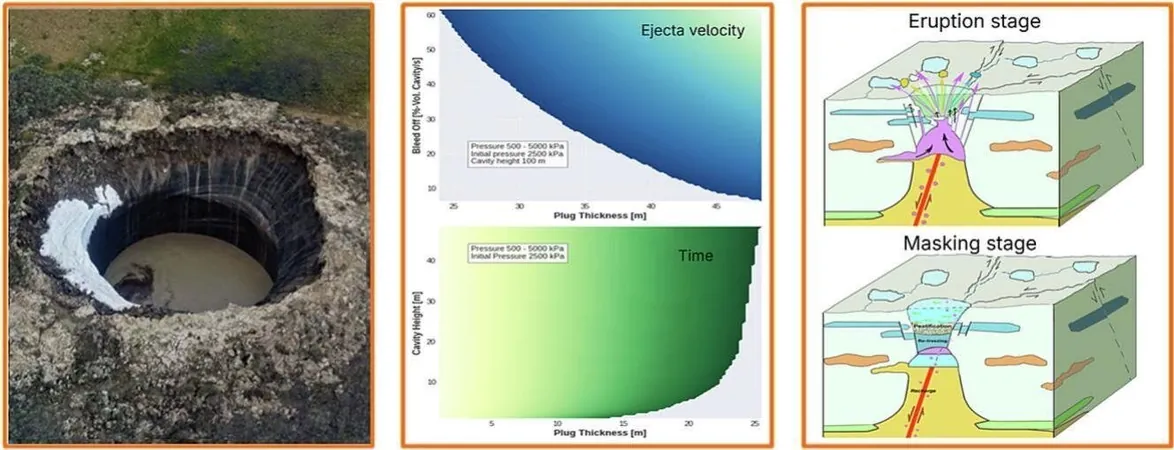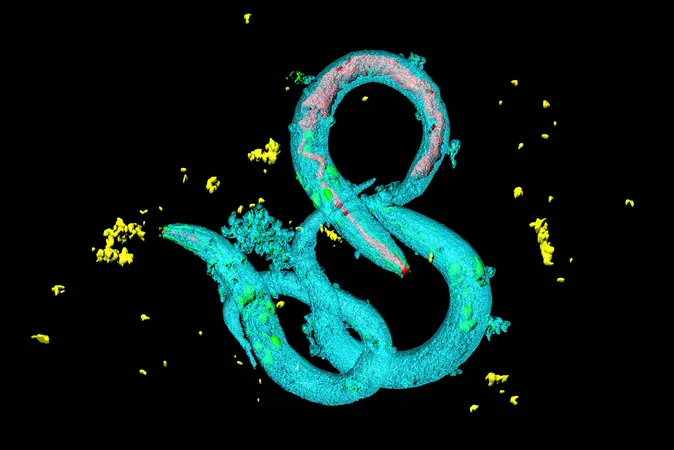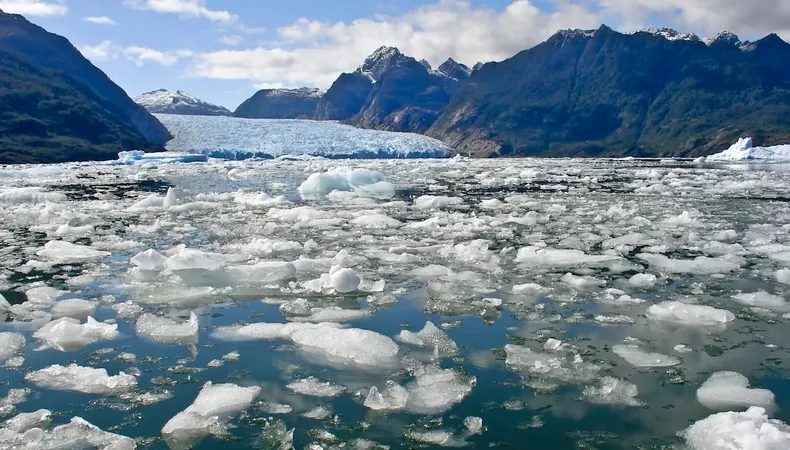
Unlocking the Mystery of Siberia's Giant Exploding Craters: A New Theory Emerges!
2025-09-17
Author: Rajesh
The Enigma of Siberia's Craters
For over a decade, scientists have been spellbound by the appearance of massive holes dotted across the remote landscapes of Siberia, particularly in the Yamal and Gydan peninsulas. These colossal depressions, termed giant gas emission craters (GECs), can plunge as deep as 164 feet and are born from explosive events that propel soil and ice skyward. But, what causes these dramatic eruptions?
Decoding the Crater Creation Puzzle
Since their first sighting in 2012, theories have abounded, ranging from meteor strikes to underground gas explosions. Yet, a perplexing question lingers: Why are these craters confined to just this region of Siberia, without sightings in other Arctic permafrost areas?
A Groundbreaking Proposal
Recent research published in "Science of the Total Environment" offers a new perspective, connecting these explosive craters to the unique geological and climatic conditions of the Yamal and Gydan peninsulas. The study highlights the abundance of natural gas deposits and the impact of climate change as central factors.
Helge Hellevang, an environmental geoscientist at the University of Oslo, and his research team have delved into past findings, geological data, and conducted numerical simulations to formulate their groundbreaking model.
How Do These Craters Form?
According to their innovative model, the formation of GECs occurs when gas and heat surge from deep below the Earth’s surface. This heat gradually melts the permafrost seal, a layer of frost that normally traps the gas. As this seal weakens, gas pressure builds beneath. With climate change accelerating the thawing of permafrost, the seal becomes critically thin. Ultimately, the pressure mounts to an explosive point, resulting in the dramatic craters we observe.
What's Next?
Dr. Hellevang and his colleagues view this model as a preliminary step. Their next undertaking involves field investigations and computer simulations to validate their findings. Intriguingly, they suspect that several more craters may quietly exist across Siberia, obscured from view as they often fill with water and debris, disguising themselves as ordinary lakes.
As we peel back the layers of this geological mystery, the potential for hidden natural wonders in Siberia continues to captivate. These craters, while a recent discovery, may just be a forgotten aspect of an ancient landscape, unveiling secrets long buried beneath the ice.


 Brasil (PT)
Brasil (PT)
 Canada (EN)
Canada (EN)
 Chile (ES)
Chile (ES)
 Česko (CS)
Česko (CS)
 대한민국 (KO)
대한민국 (KO)
 España (ES)
España (ES)
 France (FR)
France (FR)
 Hong Kong (EN)
Hong Kong (EN)
 Italia (IT)
Italia (IT)
 日本 (JA)
日本 (JA)
 Magyarország (HU)
Magyarország (HU)
 Norge (NO)
Norge (NO)
 Polska (PL)
Polska (PL)
 Schweiz (DE)
Schweiz (DE)
 Singapore (EN)
Singapore (EN)
 Sverige (SV)
Sverige (SV)
 Suomi (FI)
Suomi (FI)
 Türkiye (TR)
Türkiye (TR)
 الإمارات العربية المتحدة (AR)
الإمارات العربية المتحدة (AR)